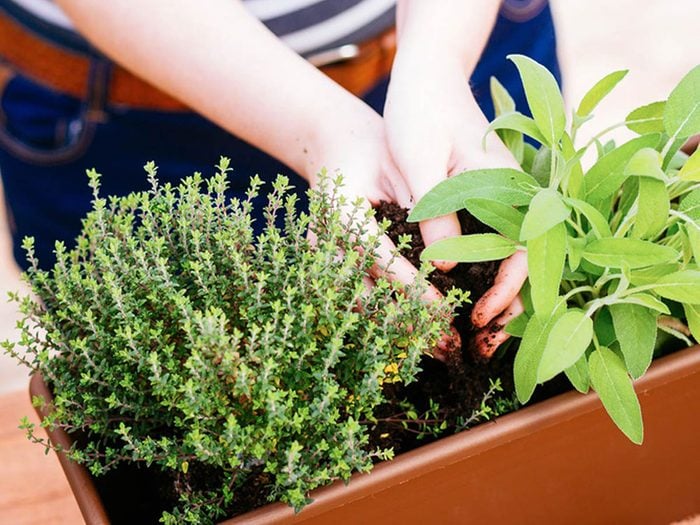
Choose the right plants for your urban garden
Some examples of resilient plants for a low-maintenance urban garden include:
- coneflowers
- yucca
- hens and chicks
- petunia
- zinnia
- daylily
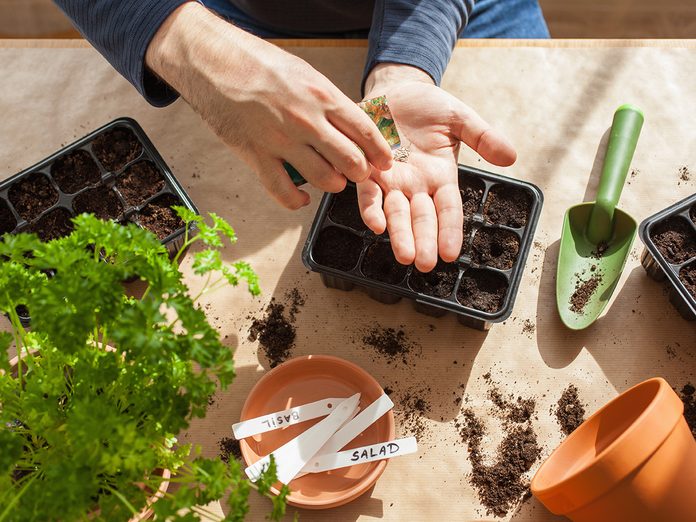
Use containers for your urban garden
When you’re gardening in the city, space is often the biggest issue. Even if you have a backyard, you might not have enough room for a garden. Growing plants in containers and hanging baskets is the perfect solution for any porch, patio or balcony that’s seriously strapped for space.
Here are some of the best flowers for planters.
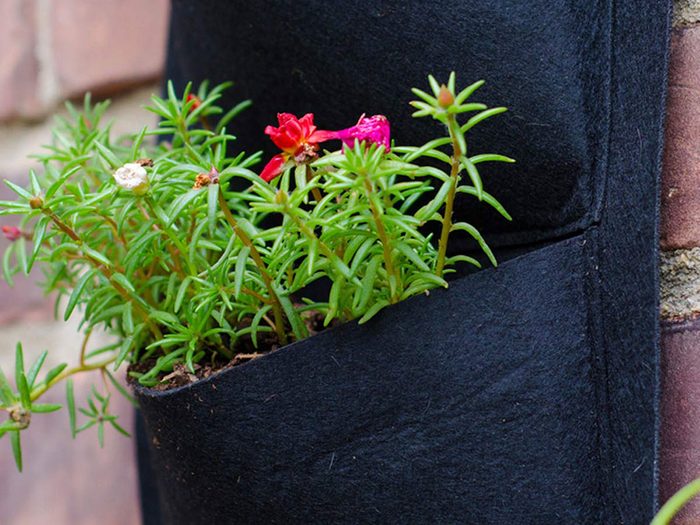
Take your urban garden vertical
You may not have a sweeping balcony, but that doesn’t mean you can’t use every inch of your space to create a beautiful urban garden. A great option for making the most of your tiny balcony is vertical gardening. You can use stack planters, railing planters, vertical wall planters and hanging baskets for an amazing apartment balcony garden. Bromeliads, ferns, begonias, hostas, succulents, air plants and vines make for great choices here.
You can also use wall pockets to incorporate a variety of plant sizes, from spillers, fillers and thrillers, without major commitment. If you change you mind about where you want the wall pocket, you can move it. And because everything has its own container, the worry about companion planting goes out the window. This is a great option for beginners.
No balcony at all? No problem! Here are some genius ways to bring your garden indoors.
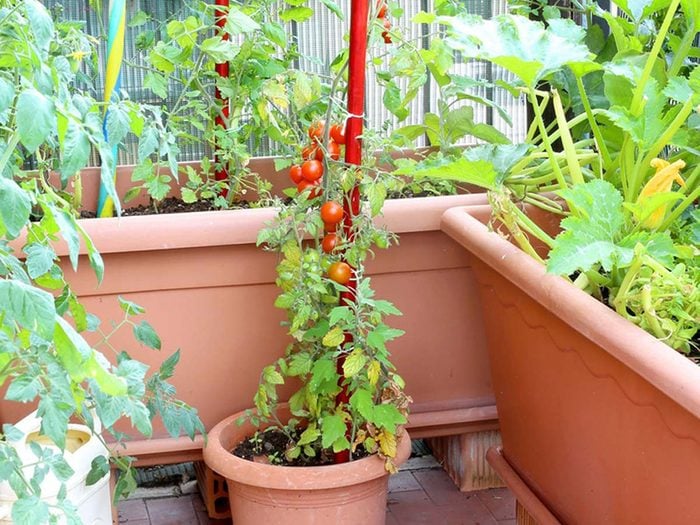
Use an urban garden to hide your wall or railing
If you love sitting outside on your balcony but can’t stand the lack of privacy, you can incorporate plants to hide your wall or railing that will not only make a more aesthetically pleasing place for you to sit back and relax, but will also keep the neighbours from looking in.
The best way to do this is grow climbers like ivy, honeysuckle and jasmine, exotic vines like passion flower or edible plants like gourds or beans in your apartment balcony garden.
Check out these tips for growing a vegetable garden—anywhere!
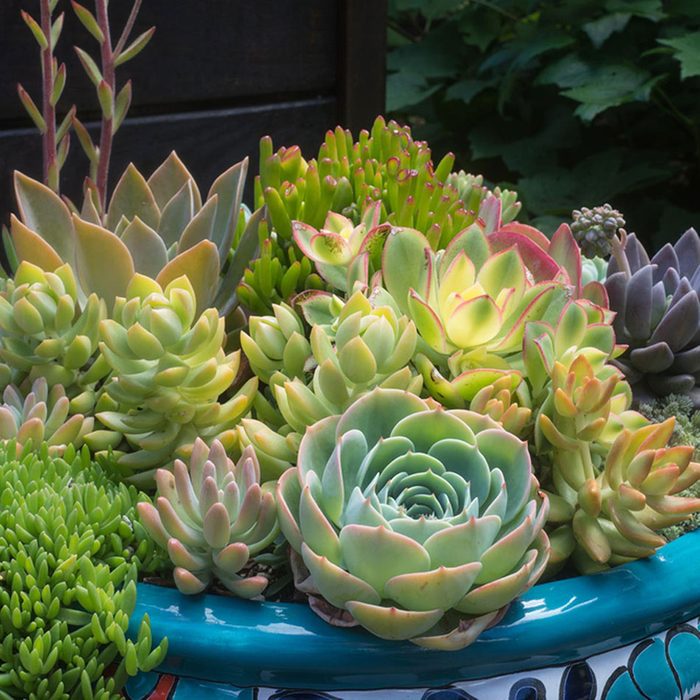
Create a succulent bowl
If your balcony only has room for a small table, then make it the focal point and create a succulent bowl bursting with colour. The stylish display is low maintenance, can incorporate various plants in a small space and needs very little watering.
To create a succulent bowl, fill a bowl with potting mix formulated for succulents. Next, pick the centrepiece, which is usually a larger, very colourful plant. After setting it in place, plant the edges of the bowl by using a mix of succulents that complement each other for texture and colour. You can plant each very close to one another without it looking crowded, but rather bountiful. Any gaps can be sprinkled with gravel or aquarium stone.
Check out these hardy indoor plants that are virtually indestructible.
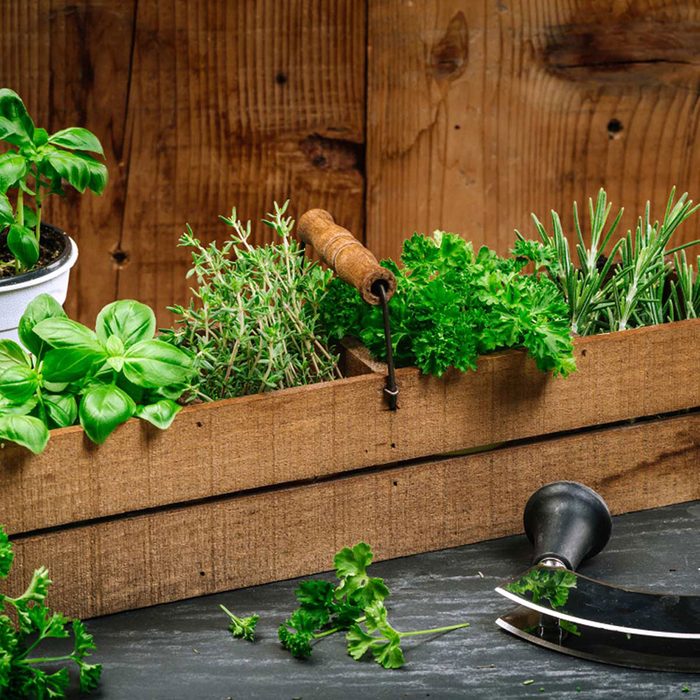
Fill your urban garden with herbs
An herb garden is another wonderful urban garden option for a balcony that doesn’t have a ton of space. Your herbs can double as both a source of food and a sleek green look. Thyme, rosemary, basil and sage are all great options.
So long as your apartment balcony garden gets six to eight hours of direct sunlight each day, you can grow many vegetables, too. Meanwhile, many greens and some herbs need much less sun to survive and thrive. You’ll save money and save yourself a trip to the grocery store when you need a sprinkle of rosemary on your roasted lamb.
Did your garden centre purchase come with some annoying flying pests? Find out how to get rid of fungus gnats.
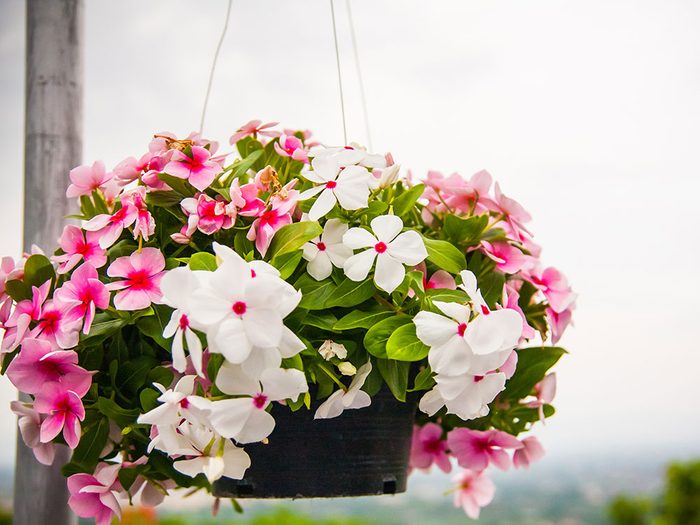
Hang smart
When you’re planning for hanging baskets in your urban garden, consider how you’re going to water them. Can you safely stand on a step stool and water with a watering can? Will you get tired of taking the basket down to water it frequently?
Psst—there’s an ice cube hack that can help water your hanging baskets!
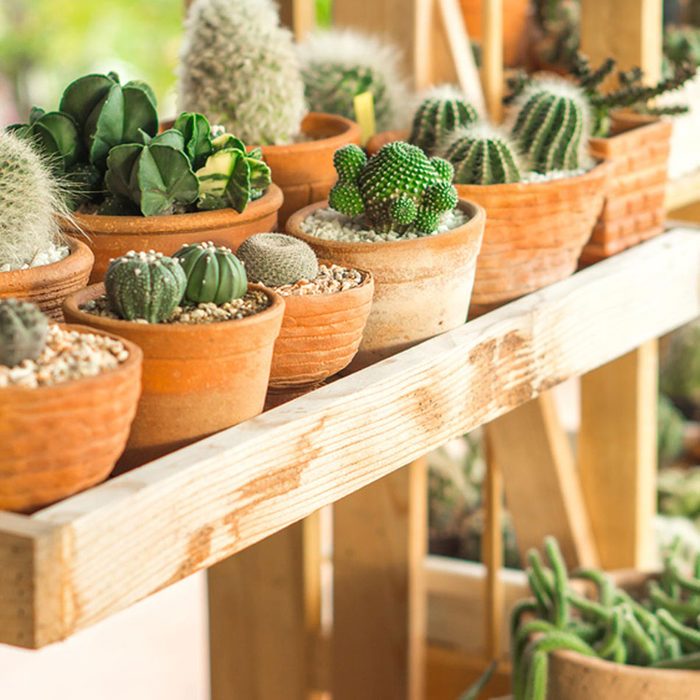
Shelf your plants
If your balcony is small and you want to make the most of it, try installing shelves along the walls to allow for additional, uncrowded green space. The height of the plants will lead the eye upward, creating the illusion of a more spacious balcony.
Interested in growing your own home remedies? Consider adding these healing plants to your plot.
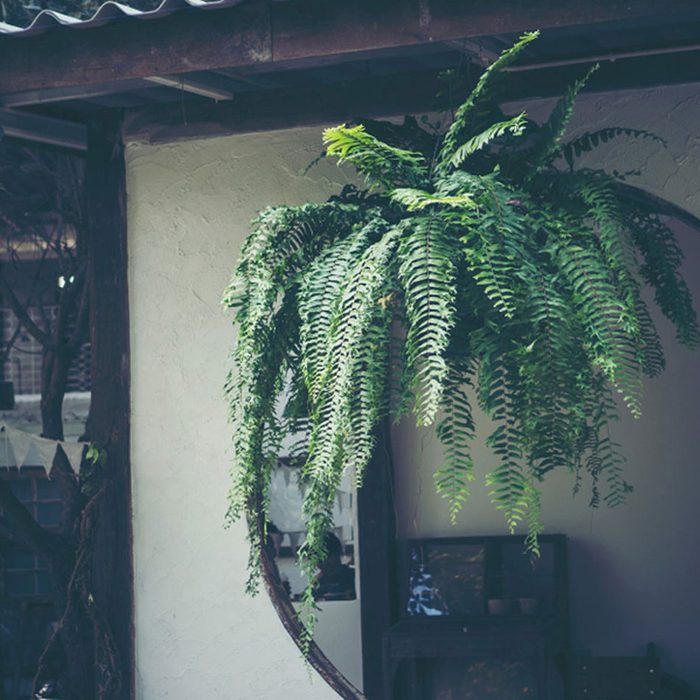
Got a shady balcony garden?
If you have a shady balcony, don’t be discouraged. You can make the most of your balcony facing north or east by growing plants that tolerate shade or grow in less sunlight, like astilbe hybrids, amethyst flower, begonia, copper plant, fancy-leafed caladium and garden hydrangea. Ferns also thrive in shady areas.
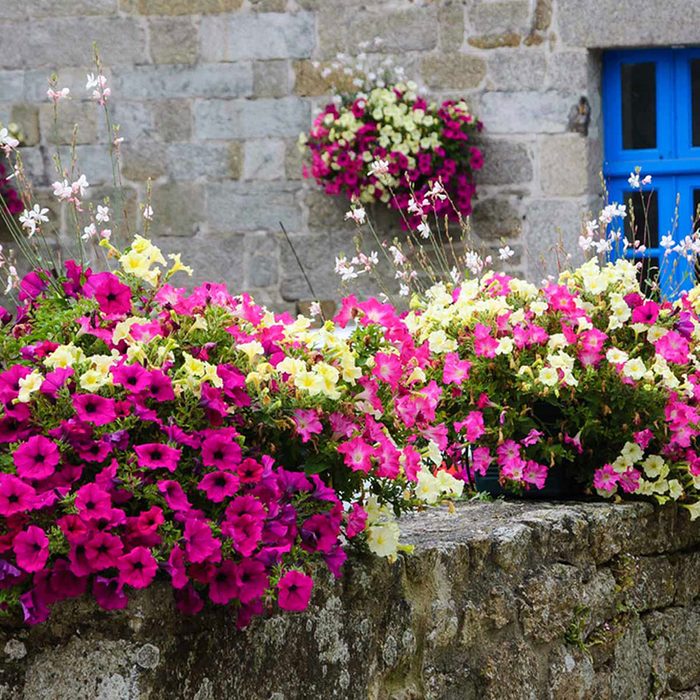
What about a sunny balcony garden?
South and west facing balconies get full sunlight almost all day long. This means you should avoid plants in your urban garden like ferns that thrive in the shade, and instead optimize greenery that loves direct sunlight. Some examples of plants that thrive in the sunshine include:
- yarrow
- shasta daisy
- coreopsis
- purple coneflower
- blanket flower
- Russian sage
- butterfly weed
- lavender
Discover the fascinating origins of Canada’s provincial flowers.
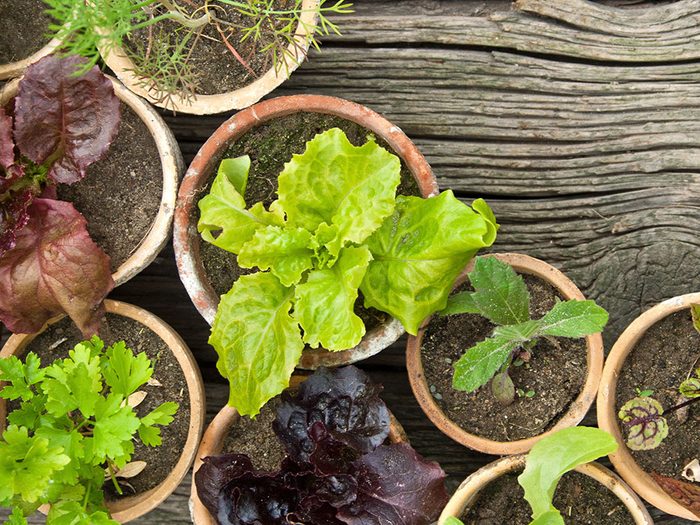
Give your plants space
Whatever type of container you choose, ensure it’s big enough that your urban garden plants will have plenty of room to grow. Ask your local nursery how much soil each plant will need. Although scientists have developed vegetables that don’t require as much growing space, some still need a lot of soil. For example, you would need at least a 19-litre container for a single tomato plant.
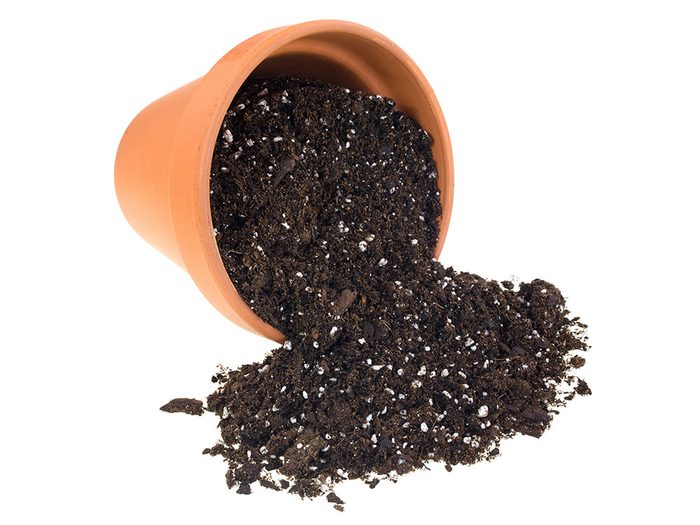
Stick to potting soil
Use potting soil in your containers rather than soil from the ground. Potting soil is lighter, drains better, and is sterilized to kill weed seeds and diseases that could hurt your plants.
Take a virtual tour of the most beautiful botanical garden in every province.
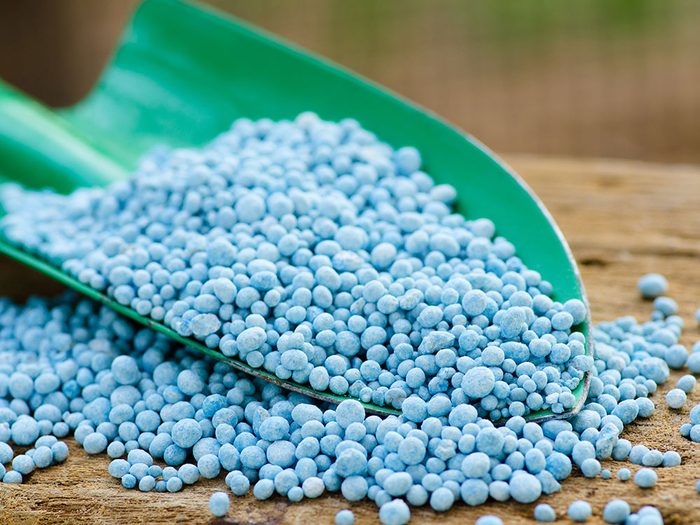
Find the right fertilizer
Use a slow-release fertilizer in pellet form. Since you need to water container plants frequently, a regular fertilizer would tend to wash right out of the soil. But in pellet form, one application will release the plant food slowly and last for several months.
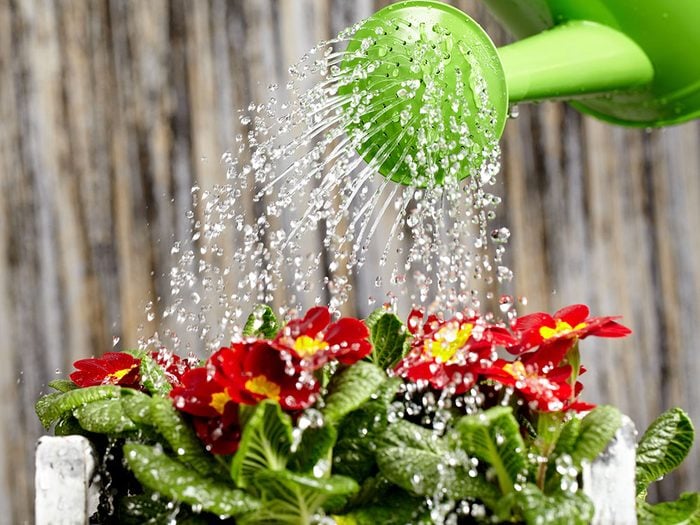
Don’t drown your urban garden
Don’t over-water your plants. Make sure that you thoroughly soak the entire container each time you water, but pour away any extra water that fills the saucer underneath the container. Making the plant sit in water encourages root rot. Since the signs of rot include wilting, many people think that the plant needs more water, which does even more damage. If you’re not sure whether the wilting is from too much or too little water, gently pull the plant up out of the container. If the roots are brown and slimy, it’s root rot. Water it less.
On the other hand, exposed balconies in high-rises can get extremely hot and dry from sunlight reflected off other structures. Under these conditions, you may need to water your plants every day. Incorporating drought-tolerant plant is another great option, so go ahead and include those succulents!
These 10 plants could attract butterflies to your urban garden.
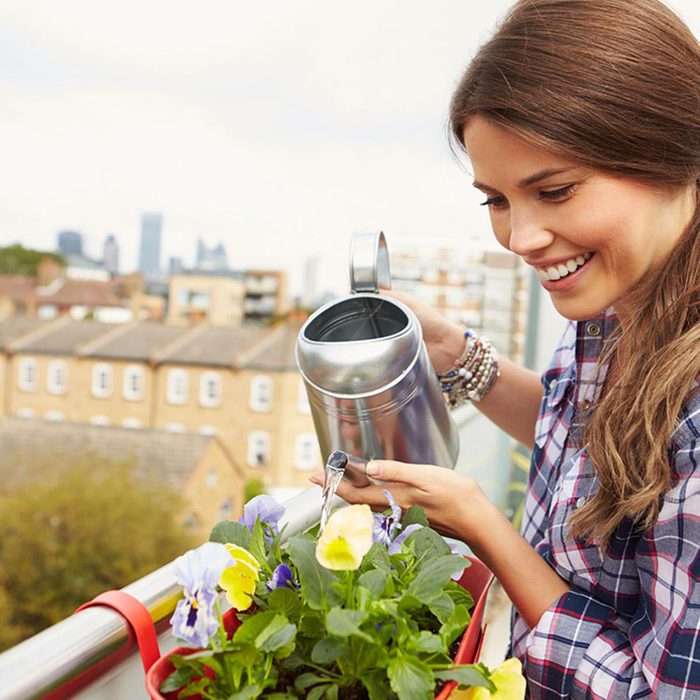
Add water-releasing crystals
If you travel a lot and worry about the health of your plants while you’re away, a fast, affordable, and practical solution is to stock up on little crystals that soak up and then gradually release water. When you add water to these polymer granules, they absorb many times their weight in water. By mixing them in with the soil in your plants’ containers and then watering, the crystals soak up and then slowly release the water to keep your plants watered while you’re gone.
Be sure to follow directions on the label, because putting more crystals in a container is not necessarily better. Since they expand when wet, too many crystals can swell up and damage your plant or even push it out of the pot.
Don’t have a green thumb? Use these tips to revive almost any dead plant.
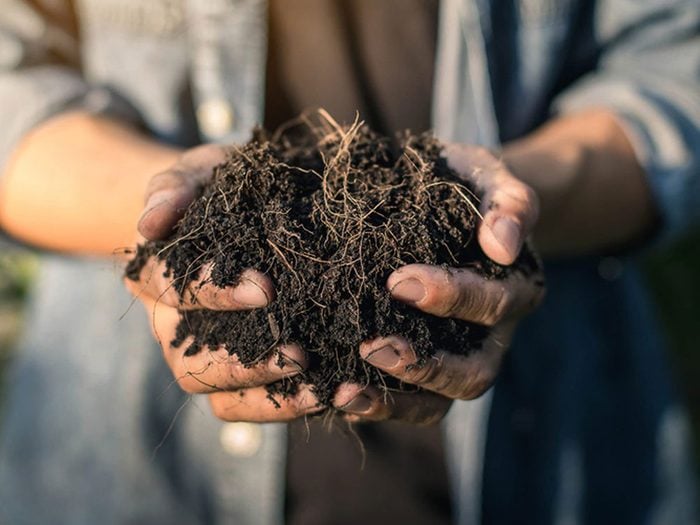
Try compost tea
Compost tea is great for an urban gardener who wants to compost, but has nowhere to put their waste products. Rather than watering your plants, make the compost tea to quench your greenery’s thirst. This makes your gardening low maintenance and your lifestyle recyclable!
To make compost tea, you’ll need a 38-litre container or bucket, an aquarium pump, good quality compost, a water source, aeration and compost catalyst (a mixture of nutrients that encourages the microorganisms to multiply). After filling your bucket with water, dump the compost catalyst into the bucket. You’ll then float your compost in a sachet similar to a tea strainer in the bucket, and finally pump it to begin the brewing process. The air will pump through the compost tea for a full day until a frothy brew is achieved. Use the tea to spray on leaves or feed the soil.
These stunning pictures of flowers from across Canada might just inspire your plant selection.
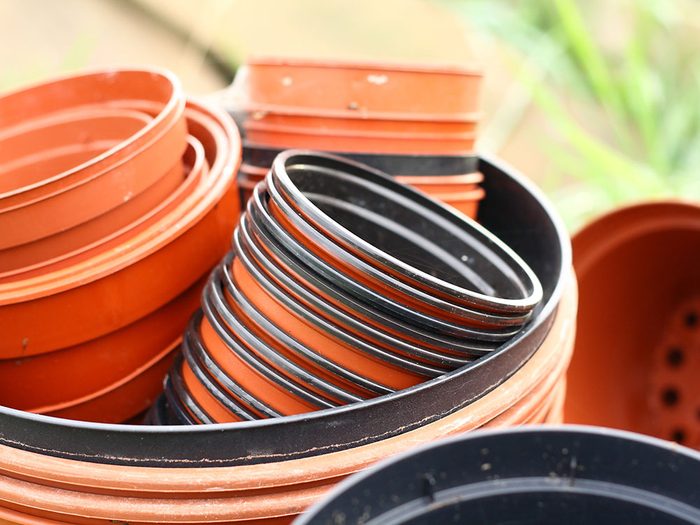
Pick plastic plant pots
Use plastic plant pots rather than clay pots. Plants in plastic dry out less quickly because the pots aren’t porous like clay ones. Put five centimetres of an organic mulch on top of the soil in the container to reduce water evaporation from the soil.
Next, check out 20 gardening tips that will save you time and money.